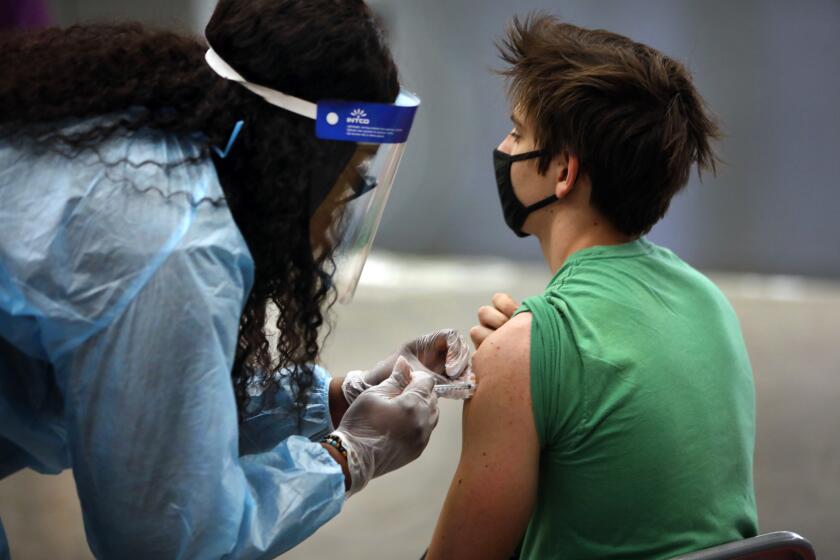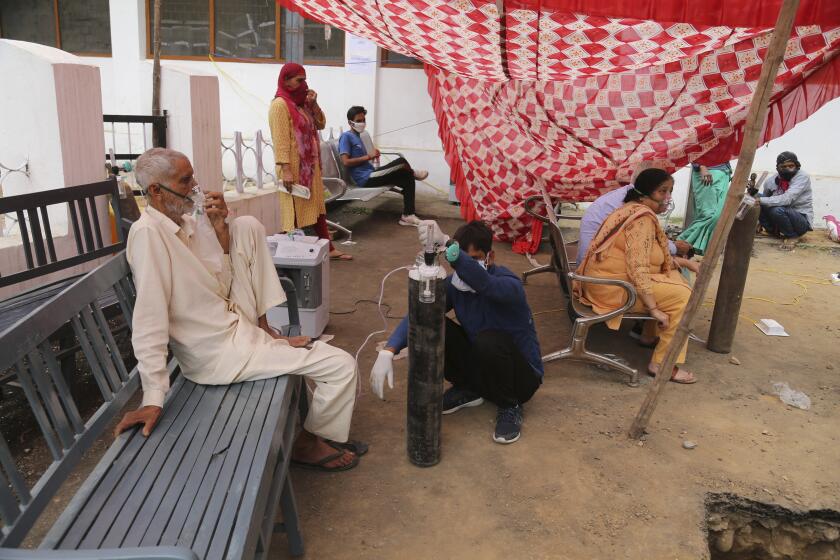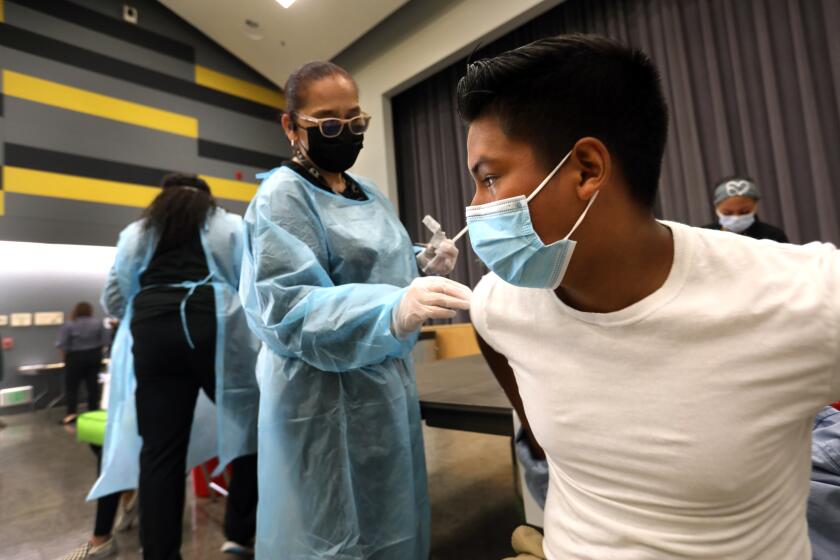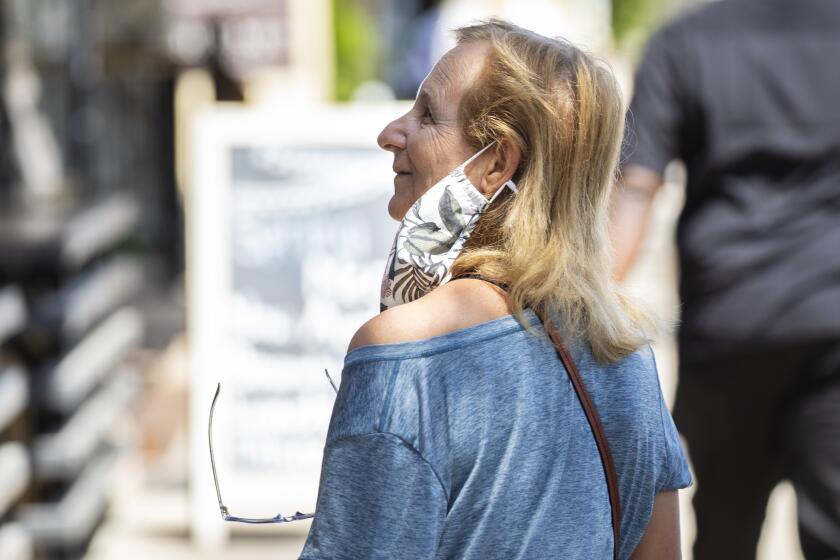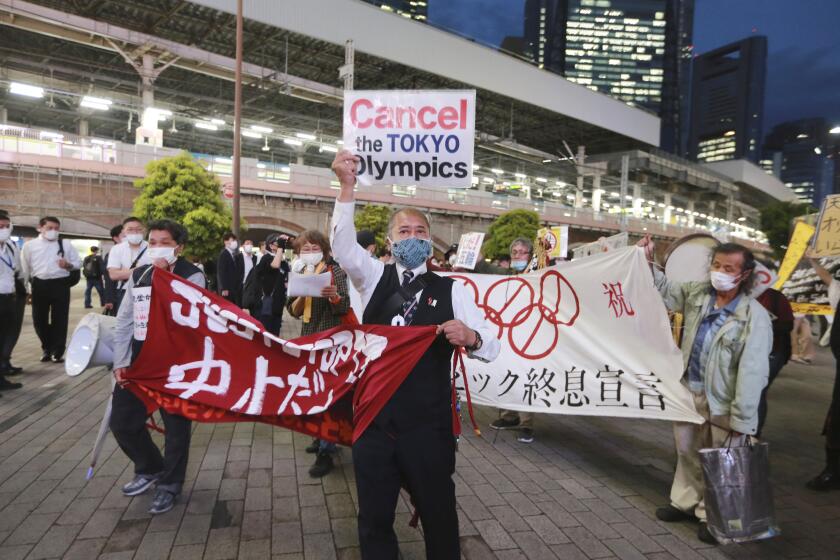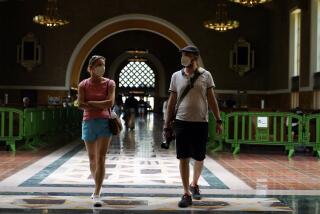Growing consensus that masks can come off as vaccine is vanquishing COVID-19
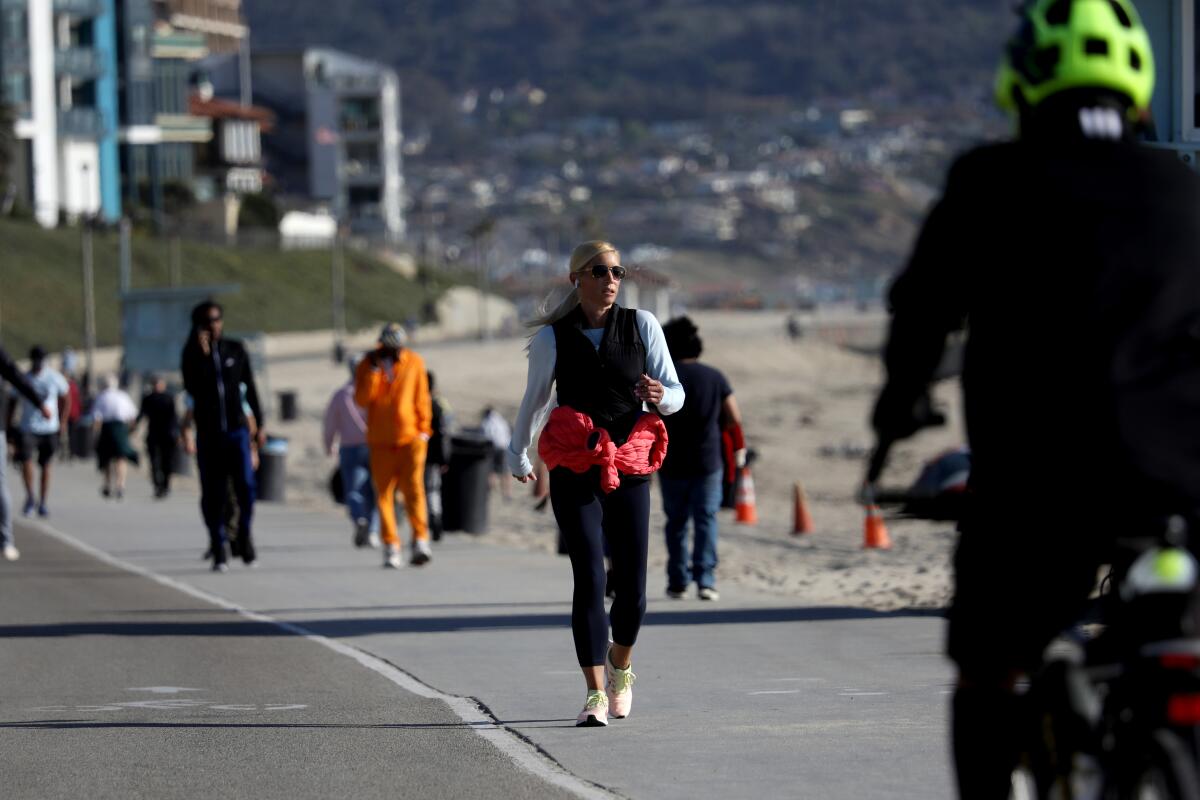
The extraordinary effectiveness of the COVID-19 vaccines is causing even the most cautious health experts to stop wearing face coverings in more settings, a marked shift that comes as California is about to fully reopen its economy.
Governments are rapidly liberalizing and in many cases dropping masking rules for those with vaccinations, and California is considering a controversial plan to not require masks or social distancing in offices where everyone in vaccinated.
Dr. Robert Wachter, chair of the UC San Francisco Department of Medicine, said he ate indoors last weekend at a restaurant with out-of-town friends.
Wachter had previously been concerned about the rare chance that he would encounter an unvaccinated infected person who could transmit the virus to him, and then the virus “breaking through” his vaccine-induced immunity. While he was confident that he wouldn’t die from COVID-19 because he’s been vaccinated, he worried about the chance of experiencing long-lasting symptoms.
But increasingly convincing evidence about the effectiveness of the vaccines and California’s continuing low daily coronavirus case rates started to change his mind. The final push was San Francisco’s infamous chilly, windy weather last weekend, which drove him inside.
“The true unpleasantness of shivering your way through dinner — while you’re wearing four layers and there’s a heater going full bore — just made me say: ‘I think I’ve crossed my threshold,’” Wachter said. “Of course, once you cross it, you’re going to keep doing it.”
More than five months into the inoculation campaign, a vast gulf has opened between the most- and least-vaccinated of California’s 58 counties.
The new confidence comes as an increasing number of studies underscores how effective the vaccines are — at preventing not only severe disease and death, but also infections. And even in the rare cases where vaccinated people get the virus, scientists say they’re far less likely to transmit it.
Those are among the reasons why UCLA epidemiologist and infectious disease expert Dr. Robert Kim-Farley said he has little reason to be anxious about getting sick if he doesn’t wear a mask inside the supermarket when California ends that requirement for vaccinated people on June 15.
“Given the extraordinary efficaciousness of this vaccine, one can again follow the science and say that it’s very low risk if you’ve been vaccinated,” Kim-Farley said. The vaccines approved in the U.S. have been quite effective not only against conventional strains of the coronavirus, but variants as well.
Another key factor is California‘s progress toward herd immunity, also known as community immunity, in which enough people have immunity to the virus to disrupt widespread transmission.
“As we get to extremely low levels of disease in the community — because of community immunity — the risks of you even being near someone who is infected becomes diminishingly small as well,” Kim-Farley said.
Coronavirus daily case rates are at rock bottom. In Los Angeles County in the past week, there have been about 200 new confirmed cases a day in a county of 10.1 million residents — a rate of 2 new cases a day for every 100,000 residents. By contrast, at the peak of the pandemic, when hospitals and mortuaries were overwhelmed, L.A. County was recording more than 15,000 cases a day, or 150 for every 100,000 residents.
San Francisco is averaging 16 new cases a day in a city of 870,000 people, or 1.9 per 100,000 residents. San Diego County is averaging 73 new cases a day in a region with 3.4 million residents, which translates to 2.2 cases per 100,000 residents.
And Orange County now has one of the lowest rates in the state — an average of only 28 new cases a day in a county of 3.2 million residents, or just 0.9 cases per 100,000 residents.
The relatively fast pace of vaccinations also is a reason it’s OK to drop masks, said Dr. Monica Gandhi, a UC San Francisco infectious disease specialist.
Across the U.S., 50% of residents have at least one dose of vaccine; in California and L.A. County, 53% of residents do. By contrast, in India, which has far higher case rates than California, only 11% of the population is at least partially vaccinated.
Those factors would explain why vaccinated people don’t need to wear masks in California and the U.S. but should still mask up in India. “Context matters,” Gandhi said.
Indians are blaming a national government that did not prepare for a second wave. Officials are now scrambling to distribute supplies.
So much has changed in California in a matter of months. Estimates by the L.A. County Department of Health Services in December estimated that as many as one in 80 residents had COVID-19. This week, the county estimates one in 2,600 residents are infectious.
Optimism is so high that the county is ending its projections on hospitalization demand. “Because of the low level of community transmission and the expected increase in herd immunity associated with ongoing vaccination, the risk of a future large increase in transmission appears to be low,” the county said. “We anticipate this to be the final projection model update.”
Federal officials are also confident in the vaccines’ effectiveness. The director of the U.S. Centers for Disease Control and Prevention, Dr. Rochelle Walensky, had a cheerfully simple message for fully vaccinated people: “If you are vaccinated, you are protected and you can enjoy your Memorial Day.”
But “if you are not vaccinated ... you remain at risk of infection. You still need to mask,” Walensky said.
A number of studies provide reassurance that vaccinated people are unlikely to fall ill with COVID-19.
A new CDC report on “breakthrough” infections in people who have been vaccinated against COVID-19 finds that just 2% of such cases result in death.
Data released by the CDC this week showed that out of 101 million Americans who had been fully vaccinated, there were 995 people who were hospitalized between January and April. That represents 0.00099% of all fully vaccinated Americans. And of the 995, about 300 were either asymptomatic or were in the hospital for reasons unrelated to COVID-19.
This is “continued evidence of the power of vaccines in the U.S., which will certainly get even better the more of us get immunized and protect the rest of the herd. The small odds of hospitalizations and deaths are so rare,” said UC San Francisco infectious disease expert Dr. Peter Chin-Hong.
From mask rules to social distancing, here’s what to expect come June 15.
There is also good news for those worried about breakthrough infections resulting in “long COVID,” a condition that includes a range of symptoms such as fatigue, difficulty concentrating and muscle pain that can last months after an infection.
While there have been reports that long COVID can occur in cases where the initial infection was mild or asymptomatic, Gandhi said the latest authoritative studies have shown that it’s symptomatic or severe disease that produce the kind of “disorganized, innate, inflammatory response that can give you symptoms that lasts a while.”
By contrast, if the body is exposed to the coronavirus after vaccination, the immune system is now primed to generate “a very organized response to the virus,” making long COVID unlikely, Gandhi said.
This would account for why some people suffering from long COVID symptoms feel better after getting vaccinated.
With two months until the opening ceremony, anti-Olympic sentiment is mounting in Japan.
The improving conditions have led Gandhi, who touted the protective power of masks early in the pandemic, to recommend that masking now isn’t needed outdoors for any children — including those not vaccinated. She also suggested mask requirements be lifted indoors for all schoolchildren when classes begin in the fall.
California could follow the lead of the United Kingdom, which never required masks for schoolchildren younger than 12, Gandhi said. Compared to adults, the noses of younger children have far fewer ACE2 receptors — proteins on the surface of cells to which the coronavirus adheres. The lack of ACE2 receptors generally explains why children are less likely to get or transmit the coronavirus to the same degree as adults, she said.
Gandhi also suggested that mask use not be required for adolescents and teenagers when daily coronavirus case counts fall below a certain daily rate, such as 3 new cases a day for every 100,000 residents — a threshold already reached in many parts of California. The U.K. on May 17 lifted its mask requirement for students 12 and older, even though most are not yet vaccinated.
In April, Gandhi said evidence showing the effectiveness of vaccines and the low case rates was so striking that she was comfortable with her fully vaccinated parents, who are in their 80s, flying in from Utah for a visit, which was capped off with a dinner at an indoor San Francisco restaurant with her two children, who were unvaccinated at the time.
When it comes to his own decision making on whether to continue wearing masks even when it’s not required in public, Chin-Hong said he suspects he’ll still wear one when it feels crowded, particularly indoors.
“I’ll kind of look around and I’ll probably see a little bit more data after we open before I like rush out and burn my mask,” Chin-Hong said.
Still, there are questions. Some parents with children who have underlying conditions and are too young to be vaccinated wonder whether they should still mask up and avoid going into workplaces or social gatherings. Some experts say it’s prudent to wear a mask if you’re around a lot of people who may not be vaccinated; others say the chance of fully vaccinated parents getting sick, becoming infectious and then transmitting the coronavirus to their children is slim.
Researchers are getting serious about understanding a disease patients call “long COVID.” Its symptoms include aches, fatigue, sleep problems and brain fog.
While everyone will have a different threshold, Wachter said he would stick with COVID-19 precautions in other areas — he won’t dine with someone who is not vaccinated. And he plans to wear a mask at the supermarket or waiting in line at a cafe even after June 15.
“I’m a physician; I’ve worn masks for 30 years. On the list of things that really bother me, walking through the Safeway with a mask on ... doesn’t bother me,” Wachter said. Of “things that cause me anxiety, the concern of a breakthrough infection still is higher than the benefit I would accrue from taking the mask off.”
Still, he said, the chances of a person sitting near your dining table at a restaurant in San Francisco with COVID-19 is “really extraordinarily low.”
“And then you multiply the probabilities of that chance, times the chance that you’re going to get a breakthrough infection, times the chance that the breakthrough infection is going to be something that you’ll regret. And you end up with a number where it really doesn’t make sense anymore to avoid that activity unless you’re at special risk, immunosuppressed, very old, perhaps,” Wachter said.
“Or you’re very anxious about it,” he added. “Nobody should feel rushed on this.”
More to Read
Sign up for Essential California
The most important California stories and recommendations in your inbox every morning.
You may occasionally receive promotional content from the Los Angeles Times.
